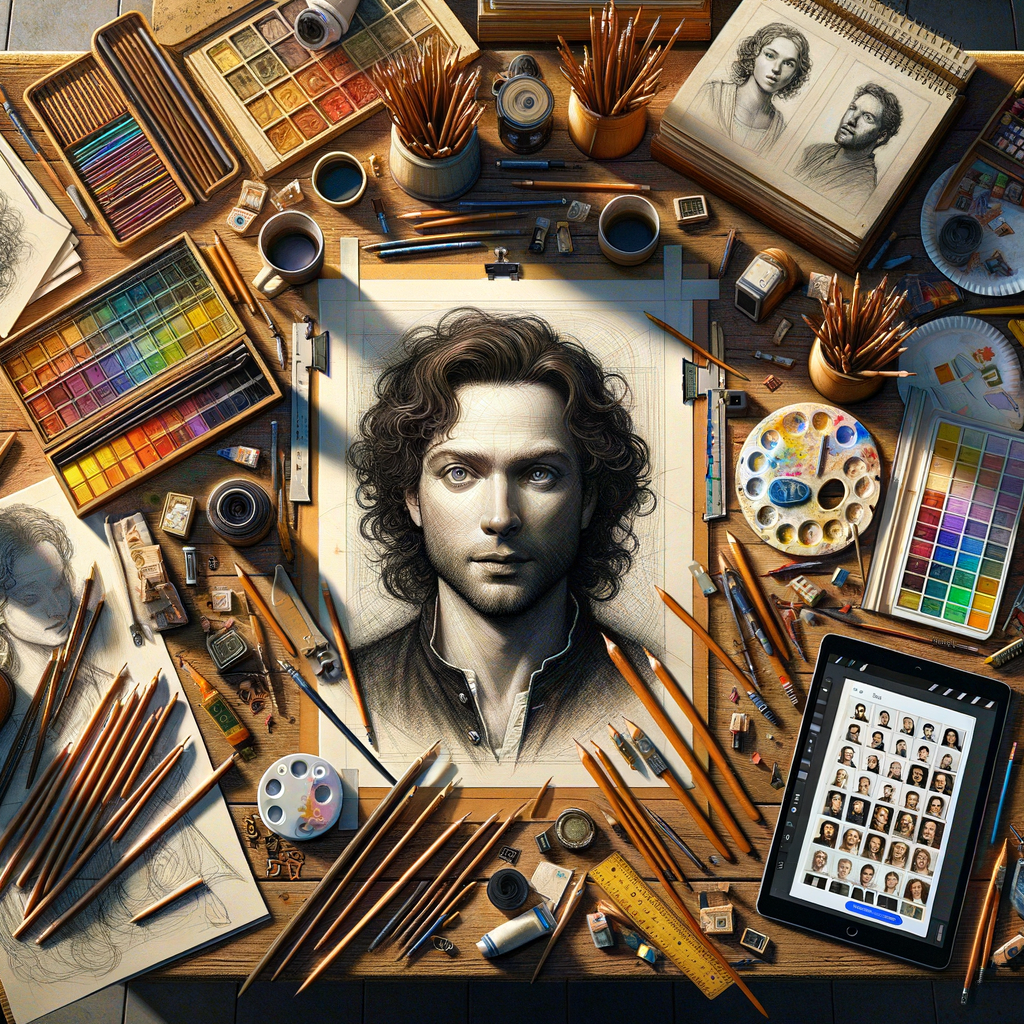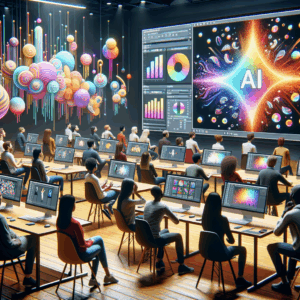
Realistic Portraits: Must-Have Tips For Stunning AI Prompts
- Understanding Realistic Portraits
- The Importance of Detail in Prompts
- Tips for Including Detail
- Structuring Your Prompt
- Example Structure
- Utilizing Reference Images
- How to Use Reference Images
- Experimenting with Style Techniques
- Popular Styles to Consider
- Using Emotional Cues for Impact
- Ways to Convey Emotion
- The Role of Lighting and Composition
- Tips on Lighting and Composition
- Iteration and Feedback
- How to Iterate Effectively
- Keeping Up with AI Trends
- Suggestions for Staying Informed
- FAQs
- Conclusion
- References
Understanding Realistic Portraits
Creating realistic portraits using artificial intelligence (AI) is more than just pixels and algorithms. It’s about infusing emotion and depth into your digital renderings. The world of AI-generated art has expanded rapidly. Artists and enthusiasts now have access to tools that can create lifelike images in just a few clicks. However, the real magic often lies in the prompts that guide these tools.
When you craft a prompt, you’re essentially setting the stage for the AI. Think of your prompt as a conversation starter. The more detail and clarity you provide, the more tailored the outcome will be. This article dives into must-have tips for crafting stunning AI prompts that yield beautiful realistic portraits.
The Importance of Detail in Prompts
When it comes to creating realistic portraits, detail is king. A prompt with rich, vivid descriptions can lead to lifelike results. For instance, instead of simply saying “a woman,” you might say “a middle-aged woman with curly, chestnut hair and bright green eyes, smiling gently.” This level of detail allows the AI to understand the specific features you want to see.
Moreover, your choice of adjectives can bring out different emotions in the resulting portrait. For example, describing a subject as “thoughtful” versus “joyful” will yield vastly different portrayals. Provide context about the person’s background, surroundings, and even their emotions. Doing so helps the AI better understand what you’re trying to convey.
Tips for Including Detail
1. Be Specific: Instead of general terms, use exact descriptions.
2. Add Context: Explain any relevant background information or emotional states.
3. Use Adjectives Wisely: These can change the entire tone of the portrait.
Structuring Your Prompt
A well-structured prompt can make a significant difference in the outcome of your AI-generated portrait. Think about how you would give directions to a person. You wouldn’t just say “Go to the park.” Instead, you’d specify which park and what to look for. The same principle applies here.
You can structure your prompt in three main parts:
1. Subject Description: Who is the subject? Age, gender, and distinguishing features should be clearly stated.
2. Background Elements: Where is the portrait set? Include details about the environment or any relevant objects.
3. Emotional Tone: What feeling do you want to evoke? Specify this to guide the AI in conveying emotion.
Example Structure
– Subject: A young girl with blue eyes and blonde hair.
– Background: Sitting in a meadow filled with wildflowers.
– Emotion: Exuding happiness and innocence.
By breaking it down this way, you’ll create a clear roadmap for the AI to follow, resulting in more satisfying outcomes.
Utilizing Reference Images
Reference images can be powerful allies. They provide the AI with visual context that words alone can’t convey. When you include a reference image along with your prompt, you dramatically increase the chances of achieving a realistic portrait.
You can either upload your own images or use examples from the internet. Look for images that capture your desired features, expressions, or even color palettes. Use these images as visual keywords in your prompts.
How to Use Reference Images
1. Choose Relevant Images: Make sure the images closely match your description.
2. Annotate: If possible, annotate the key features you want the AI to focus on.
3. Combine With Text: Use both images and descriptive prompts for maximum clarity.
Experimenting with Style Techniques
AI can mimic various artistic styles, making it versatile for realistic portraits. Yet, the style can significantly affect the output. If you have a particular style in mind, make sure to mention it in your prompt.
For instance, you may want a portrait inspired by classical art or a modern interpretation. Specify elements such as “realistic” or “hyper-realistic.” You could even mention famous artists as a point of reference, like “inspired by Vermeer” or “similar to a portrait by Rembrandt.”
Popular Styles to Consider
– Classical Realism: Focuses on accurate representation and detail.
– Impressionism: Emphasizes light and emotion over strict accuracy.
– Photorealism: Aims to replicate the look of high-resolution photographs.
By indicating the desired style, the AI can tailor its output to meet your expectations.
Using Emotional Cues for Impact
In art, emotion plays a crucial role in connecting with the viewer. To create a compelling realistic portrait, incorporate emotional cues into your prompt. Think about the feelings you wish to convey through your subject’s expression and pose.
Don’t shy away from using vivid language. For instance, words like “joyful,” “pensive,” or “serene” can guide the AI toward creating the desired emotional atmosphere. Especially when combined with your specific subject details, these cues can add depth and resonance to your artwork.
Ways to Convey Emotion
1. Facial Expressions: Clearly describe the expression (e.g., smiling, frowning).
2. Body Language: Specify the subject’s pose and how it reflects their mood.
3. Color Palette: Suggest colors that evoke particular feelings.
The Role of Lighting and Composition
Lighting can dramatically alter the mood of a portrait. Different kinds of lighting influence how features appear, enhancing or softening them. When crafting your prompt, consider detailing the type of lighting you want. Options include natural light, harsh shadows, or soft ambient glow.
Similarly, composition is essential for guiding the viewer’s eye. Mention aspects like the subject’s placement, angles, or focal points. For example, “the subject should be centered, with a soft bokeh background” helps frame the portrait effectively.
Tips on Lighting and Composition
– Lighting Styles: Consider options like backlighting, side lighting, or dramatic, high-contrast lighting.
– Composition Techniques: Use rules like the Rule of Thirds to create balance.
– Focal Points: Specify what should draw attention in the portrait.
Iteration and Feedback
AI technology excels at iterative processes. Take advantage of this by refining your prompts based on initial outputs. If the first attempt doesn’t meet your expectations, don’t hesitate to adjust your prompts. Fine-tuning details can lead to significantly improved results.
Seek feedback either from fellow artists or online communities. They can offer valuable insights and suggestions for enhancing your prompts. By adopting a mindset of continuous improvement, you’ll grow more adept at crafting effective AI prompts.
How to Iterate Effectively
1. Analyze Initial Results: Look at what you like and dislike in the output.
2. Make Specific Adjustments: Change details one at a time for clarity.
3. Ask for Feedback: Reach out to peers or forums for constructive criticism.
Keeping Up with AI Trends
The world of AI art is ever-evolving. New tools and techniques emerge regularly, pushing the boundaries of what’s possible. To create stunning realistic portraits, stay informed about the latest trends and developments in AI technology.
Subscribe to newsletters, follow innovators in the field, and join online communities. These resources can provide inspiration and keep you updated on new techniques for crafting better prompts.
Suggestions for Staying Informed
– Follow Influential Artists: Engage with those who successfully leverage AI.
– Join Forums: Participate in discussions on platforms like Reddit or Discord.
– Subscribe to Blogs: Many websites dedicated to AI art offer valuable updates and tips.
FAQs
1. What is the importance of detail in AI prompts?
Clear and detailed prompts help AI understand your vision, leading to better results.
2. Can I use my own images as references?
Absolutely! Uploading your images can greatly enhance the quality of the AI-generated portraits.
3. What styles can AI mimic?
AI can replicate styles like classical realism, impressionism, and photorealism, among others.
4. How can I add emotional impact to my prompts?
Use vivid language to describe feelings and expressions you wish to convey.
5. What lighting styles work best for portraits?
Natural light, high-contrast, or soft ambient lighting can create different atmospheres in portraits.
6. Why is iteration so important in AI art?
Refining prompts through multiple attempts can lead to much-improved results.
7. How do I know if my prompt is clear enough?
Pay attention to the initial output. If it’s not what you expected, consider adding more detail or clarity.
8. What resources can I use to learn more about AI art?
Follow artists, join forums, and subscribe to relevant newsletters or blogs.
9. Should I focus more on subject or background in my prompts?
Balance both aspects. However, a detailed subject description often yields the most impactful results.
10. Can I blend different styles in one portrait?
Yes! You can specify multiple styles or influences in your prompt.
Conclusion
Crafting effective AI prompts for realistic portraits can transform your digital art experience. By focusing on detail, structure, emotional cues, and current trends, you open the door to endless creative possibilities. Embrace experimentation, seek feedback, and let your imagination guide you. Armed with these must-have tips, you’re well on your way to creating stunning AI-generated portraits.
—
References
1. Art of AI: How Artificial Intelligence is Changing Portraiture
2. The Importance of Detail in AI Art
3. Mastering AI Art: Techniques for Stunning Results
4. Lighting Techniques for Portrait Photography

